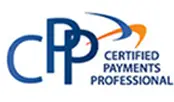When it comes to starting and running your business, there are many complicated and challenging components, including raising capital, streamlining processes, leveraging technology, recruiting and managing staff, accounting, customer service and marketing. None of it amounts to anything if you can’t successfully collect payment from your customers. And in our modern world, the most common means of consumption and payment processing is via credit card.
Most likely, you are so focused on building and running your business that you don’t even think about the processing rate your business pays for every dollar you currently earn. The problem is that so few business owners truly understand how this works. The cornerstone of comprehending this complicated issue is a concept called interchange.
What is interchange?
When you look at your monthly merchant statement, you are looking at the cost of your payment processing, as your hard-earned money is taken out of your business’s profits. Let’s call a spade a spade; interchange is dizzyingly complex. It would be a mistake to try to comprehend interchange and all its byzantine rates and variations. You don’t have to understand the mechanics of a washing machine to know how to do your laundry. What’s more important is having a general understanding of what interchange is, why it’s there, and how it affects your credit card processing expenses and, in a greater sense, your business profits.
Interchange is the discount processing rates charged by Visa and MasterCard. Much like death and taxes, it is absolutely guaranteed. There’s no way around it. And worst of all, it goes up every year. A “discount” rate that goes up every year? Usually, when it comes to taking your money, big powerful companies like to use rosy-sounding euphemisms. The interchange rates apply to every type of card your business will ever accept, and in every conceivable way that they are used, including check, credit, debit, business cards, et cetera.
Why does it matter to you?
One of the best ways to instantly increase your profits is to keep more of the money you make selling your products or services. By overpaying for your credit card processing, you are leaving money on the table. The problem is that many merchant services companies overcomplicate their rates, leaving business owners scratching their heads. Let’s be honest, the merchant services industry is often hated for this reason.
Interchange is complicated, and all processors charge a markup over interchange. The difference is how they mark it up. Since all processors pay the same for interchange, and there are over 300 different categories of interchange, processors have a myriad of ways to collect their fees on top of interchange fees. Some of the most common ways are listed below.
- Three-bucket model — Since interchange is broken out into over 300 different rates, some processors have created buckets that price all those categories into three simple categories. Qualified bucket is all your swiped credit cards, mid-qualified bucket would be your rewards cards and AVS (Address Verification System) verified key-entered cards, and non-qualified would be key-entered cards, corporate cards, foreign cards and everything else not otherwise qualified. This may seem like a simpler way to read your statement, but this prevents each card from coming through at their correct rate. For example, if a check card has a cost of .05%, in a three-bucket model that card may be assessed at over 1% to the merchant. Card Fellow, an independent review company, explains this concept in more depth.
- Subscription model — In this model, you pay straight interchange fees with no markup, plus a set monthly fee along with a transaction fee. This model seems good on the surface, but when you factor that companies are charged a set monthly fee that can range from a few dollars a month up to $100 or more per month, you’ll soon realize this model can ultimately cost more.
- Flat fee model — Square is the largest user of the flat fee model. The 2.75% swiped and 3.50% plus 15 cents keyed rates they charge are well-advertised and are easy to understand. That said, once you do the math, you’ll see this model isn’t always so close in price to most traditional models, except for from small merchants processing less than $1,500 per month or with average tickets (sales) less than $15.
- Pass-Through Model – This is the model I am most familiar with since it’s the model used by my company as well as several of our competitors, such as Heartland Payment Systems and Eliot Management Group. Pass-through means you pass on the actual interchange charges with a set markup for each card type to the merchant, with one set markup over those rates. This allows the merchant to get the best rate per the card being taken and have transparency with the markup over the interchange rate.
Understanding this important concept is critical to your business. While a few percent here and there being taken from your profits doesn’t sound like much, it can add up to huge sums of money. Much like the Grim Reaper’s scythe and Uncle Sam’s rake, interchange fees cannot be avoided. You can, however, avoid merchant services companies taking advantage of your confusion to capture your hard-earned money, a few percentage points at a time, for the life of your business.




